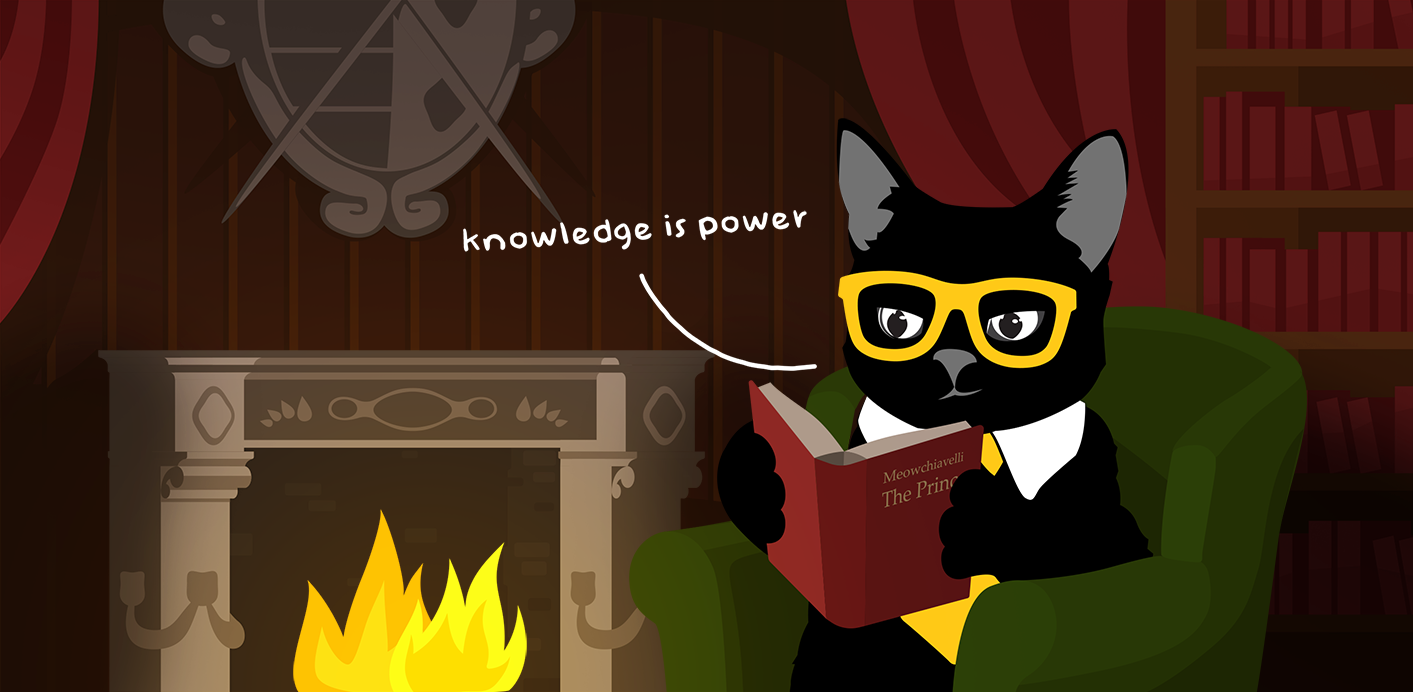Customer expectations are constantly changing, but the trend is clear: Customers expect stellar customer service — and they’ll bail if they have a bad experience. When things go off the rails, your customers want to feel like you understand and care about the challenges they’re facing.
So although “providing great customer service” can be defined a hundred different ways, you’ll always find empathy is a key component.
In customer service, empathy is the ability to share a customer’s feelings. It’s conveyed through tone, mirroring, and the agent’s understanding of the customer’s emotional state.
Using empathy statements for customer service is one of the best ways to start training your team to be more empathetic.
What is an empathy statement?
Empathy statements are designed to create meaningful connections with your customers and enhance overall customer satisfaction. They instill a sense of understanding and care into the support experience and connect us as humans rather than just some nameless, faceless entity on the other end of the phone (or email, chat, or carrier pigeon — we don’t judge).
Here’s why it matters:
- Good empathy statements create a human touchpoint instead of the usual transactional support interaction.
- Empathetic statements help soothe angry customers, provide reassurance during challenging issues, and relieve customer frustration.
- Effective empathy statements have the power to turn dissatisfied customers into loyal advocates.

The best customer service empathy statements
The best empathy statements for customer service don’t sound like scripts.
You can train your customer support team on these empathy statements, but if they just repeat them like robots, then they won’t have the impact you’re hoping for. To have a paw-sitive impact, your team needs to be able to use these empathy statements sincerely.
They need to communicate in a way that shows they actually care about helping your customers (like, for real).
With that important point made, here are twelve customer service empathy statements you can start using today:
- “Hi, (customer’s name).”
- “I’m sorry you’re having an issue with (issue).”
- “I’m sure that’s frustrating.”
- “I’m sorry we haven’t gotten you what you needed.”
- “This shouldn’t have happened.”
- “Is there anything else I can help you with today?”
- “I’d be frustrated in this situation too.”
- “This will be resolved in X days,” or, “You can expect me to follow up with you in X days.”
- “Let me know if that works for you.”
- “I’m taking a look at this right now for you.”
- “I’ll make sure this gets resolved for you.”
- “I can help you with that.”
✨ These empathy statements for customer service teams are meant to be quick, go-to resources for training your team. If you’re looking for more, here’s a full list of support resources & tools to learn from.

1. “Hi, (customer’s name).”
Use this empathy phrase at the beginning of the customer service conversation to easily incorporate the customer’s name and create an instant connection, for example:
Agent: “Thanks for calling customer support! This is Molly. May I ask who I’m speaking with?”
Customer: “Hi, Molly. My name is Joe.”
Agent: “Hi, Joe! Thanks for calling in today. How can I help you?”
All customer support agents should be using the customer’s name at the beginning of the call to create a connection. It shows respect, recognition, and a genuine interest in whatever reason the customer is engaging the support department.
You can also incorporate the customer’s name into many of the other empathy statements below, like, “I’m sure that’s frustrating, Joe,” or, “I can help you with that, Joe.”
The key is to make it natural — don’t overdo it! Overusing the customer’s name immediately sounds scripted and ultimately breaks the connection you’ve worked hard to establish.

2. “I’m sorry you’re having an issue with (issue).”
This empathy statement is key to taking ownership of whatever issue your customer is having.
The customer knows you didn’t do anything on purpose but at the same time, they want to know they’ll be taken care of. Use this statement to ensure your customers that you understand the issue.
This empathy statement has two specific parts that help build a connection with your customer:
- The apology. First, by apologizing, you take ownership of the issue. An apology doesn’t have to acknowledge fault, but it does acknowledge that there is something wrong and you’re there for the customer. And if it is a direct fault of your company’s product or service failing, you’ve taken ownership of that too.
- The paraphrase. Paraphrasing the issue acknowledges that you understand what they’re dealing with and can work to fix it. It shows you actively listened to your customer with your full, undivided attention.
Essentially, this empathy statement makes your customer feel like it’s just you and them, and like they’ve got your full attention at that moment—instant connection.

3. “I’m sure that’s frustrating.”
Whether it’s big or small, it’s always frustrating to have an issue with a product or service. On top of that, the customer needs to take time out of their day to contact the support team for help.
Use this statement to acknowledge the frustration they’re having by putting yourself in the customer’s shoes. It’s a simple statement that connects you to the customer by conveying that you understand why the customer is frustrated, regardless of whether you would be frustrated in a similar situation.
This statement is also great for calming down a frustrated customer. As a customer, when you feel understood and acknowledged, it’s easier to trust the person on the other end that they’ll get you the help you need.
4. “I’m sorry we haven’t gotten you what you need.”
This is an effective empathy statement for customer service situations where the customer hasn’t quite gotten what they needed. For example, if a customer has to call in for a third or fourth time, it’s important to acknowledge how frustrating that is.
Saying, “I’m sorry we haven’t gotten you what you need” is a nice way to admit that the ball was dropped, and it’s a great precursor to taking ownership of the issue.

5. “This shouldn’t have happened.”
This empathy statement example is a key phrase for situations where there was some sort of oversight in the actual product or in the customer experience. It acknowledges that the issue should have been foreseen.
A good example of this is a lack of follow-up on an open ticket. Poor expectation setting can cause a customer to feel the need to contact your support department again when it’s 100% preventable with the proper follow-up.
Saying, “Sorry, this shouldn’t have happened” admits that a mistake was made and reassures the customer that they’re in good hands.
6. “Is there anything else I can help you with today?”
Use this empathy statement toward the close of a phone call to turn a good customer experience into an a-meow-zing one.
Asking your customers if there is anything else they need shows empathy by respecting their time. You want to ensure all their needs are taken care of before they hang up the phone so they don’t have to call for a second issue they may not be thinking of right then and there.
This empathy statement may spark a second question they forgot to ask or a second issue they may have meant to bring up. At the very least, it conveys a willingness to go above and beyond to make sure your customer’s needs are addressed.

7. “I’d be frustrated in this situation too.”
Use this empathy statement to acknowledge that the situation they’re frustrated with is not a “them” issue and that you’d be feeling the same way if you were experiencing the same situation.
Support situations can often feel frustrating for the customer, but an empathy statement that says, “Hey, it’s normal to feel frustrated with this, but I’m here to help” can quickly turn bad situations into great customer service conversations. There’s a reason that 68% of customers will spend more money with a brand that understands them and treats them like an individual.
8. “This will be resolved in X days,” or, “You can expect me to follow up with you in X days.”
Empathy cannot be overstated when it comes to time. As the old adage goes, “Time is money.” Both of these empathy statements set crystal clear expectations for what is going to happen next — whether it’s a resolution or an update.
This shows respect for the customer’s time and creates an understanding that you have taken ownership. The customer doesn’t need to contact support for an update or a resolution. They can rest assured that you are handling the situation from start to finish and that you’ll keep them updated along the way.

9. “Let me know if that works for you.”
This is one of the most effective empathy statements for customer service because it gives the customer a chance to acknowledge if they’re satisfied or not. By asking the customer if they’re satisfied with the outcome, you allow them to speak up and voice any potential concerns with the proposed resolution.
Asking if they’re satisfied with the outcome allows you to pivot to help the customer before it gets to any CSAT (customer satisfaction score) or NPS (net promoter score) surveys. You’re turning a potentially reactive situation—addressing the unhappiness after the interaction—into a proactive situation by removing any roadblocks before the interaction stops.
10. “I’m taking a look at this right now for you.”
Use this empathy statement near the beginning of a real-time interaction or as part of a first (empathetic) response via email. This lets the customer know you are on the case and assures them they’re not just hanging in limbo.
Ambiguity creates confusion and adds to frustration. So set some expectations with your customers along the way.

11. “I’ll make sure this gets resolved for you.”
One of the hallmarks of being the receiver of empathy and understanding is the weight it can take off your shoulders. That’s exactly what this empathy statement does.
Hearing a customer service agent say, “I’ve got this for you, and I’ll make sure it gets resolved” builds rapport and trust. It transfers the ownership from the customer experiencing the issue to the person taking care of the customer.
And delivering a resolution after taking ownership of an issue creates lifelong customers.
12. “I can help you with that.”
This empathy statement is best used at the beginning of a real-time support interaction right after the customer has laid out their issue.
Imagine calling into support and being frustrated by an issue with a product or service. After expressing your frustration and detailing your issue, you hear a calm and understanding voice on the other end simply say, “I can help with that.” Weight lifted. Connection made.
This empathy statement tells the customer, “You’ve come to the right place” and gives them peace of mind. It calms the customer and can de-escalate an already-tense situation.

Customer service empathy statements to avoid
Ever had a chat with customer support that was just too sweet? Like they’re trying too hard to please you? Sure, they might get the job done, but does it feel genuine or personal?
Ines van Dijk asked around for examples of these over-the-top positive interactions, and here’s what people shared:
“Oh no! It was broken? I’m extremely honored to help you out today.”
“You’re in luck! I can get you a new dryer in just three days! Others had to wait weeks, but because you’re so special to me, I’ll get you a new one in 3 days!”
When the tone of your responses doesn’t match your customer’s mood, even if it’s positive, it gets weird. So, while agents can show empathy by being emotional, it doesn’t work when there’s a disconnect with their customers.
The opposite is also correct. When handling an upset or angry customer, customer service agents shouldn’t be more upset. Your support team should be on the same page and match the customer’s energy without getting overwhelmed.
Here’s what to avoid when showing empathy:
- Using overly dramatic words, like “such”, “so”, and “beyond”.
- Showing more emotion than the customer. Try to mirror their energy instead.
- Flirting with a customer is never okay, even if you’re trying to show empathy!
When checking how well your team communicates with empathy, keep an eye out for these things. It’s also a good idea to revise your tone guide based on the empathy statements for customer service you’ve just read all about.
Track empathy statements with QA software
In a world filled with automation and AI-powered workflows, creating moments of genuine empathy can be a huge differentiator for businesses.
Teaching your team to be empathetic is the first step to improving customer service.
Making sure they’re consistently demonstrating empathy is the second. If you could use a little help with that, there’s no better way than setting up a quality assurance program and including empathy on your QA scorecard.


